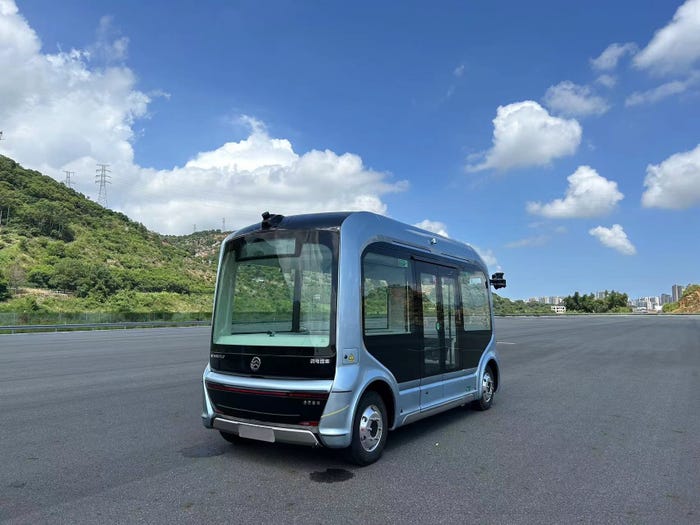Study: Organizations Using IoT and AI in Tandem See SuccessStudy: Organizations Using IoT and AI in Tandem See Success
Those who have deployed both IoT and AI are seeing results, according to recent research.
October 30, 2019

Remember in high school algebra, trigonometry or another math course when a student would raise his or her hand and ask something along the lines of: “What are we going to use this for? How will this be useful for us in our adult life?” The types of students asking such questions were generally less-than-stellar students. But those who possessed the necessary determination and imagination to fathom the possibility of mathematics often ended up not just with good grades, but, years later, with successful careers in fields ranging from accounting to science.
In a certain respect, IoT and AI bear a resemblance to a metaphorical classroom. Topics such as AI and IoT can seem nebulous at first to the uninitiated, but, given some technical discipline, their power becomes evident. “I think it’s the early-movers [in using IoT and AI together] who tend to do better — those who have their hand up in the class,” said Jason Mann, vice president, IoT at SAS. “But also, those who are willing to invest in the journey are equally likely to be differentiated now.”
IoT with AI and Strategic Investment Tends to Deliver Results
Now, a survey from SAS, Deloitte, Intel and IDC echoes that theme, highlighting the power of AI, in particular as a success driver for IoT. In fact, the report finds organizations that fuse IoT and AI conclude they cannot compete effectively with IoT alone. A total of 90% of respondents who are “heavily using AI with IoT” reported seeing results that exceeded their expectations.
[Industrial IoT World is the event where companies learn how to scale IIoT for integration, innovation and profit. Save $200 on your conference pass with VIP code “IOTWORLDTODAY.”]
That’s a noteworthy conclusion given the relatively early phase of adoption for both AI and IoT. Artificial intelligence, to a large extent, continues to be hype-laden. According to Gartner’s 2019 artificial intelligence-specific hype cycle, the bulk of AI-related technologies and trends are years away from widespread adoption. AI technologies such as autonomous vehicles, artificial general intelligence and quantum computing are the farthest away and could be more than a decade away from prime time. But technologies such as predictive analytics, computer vision, machine learning and robotic process automation software are likely a handful of years away from maturity. A separate hype cycle finds IoT technologies at a similar point, albeit slightly more mature.
The overwhelmingly positive results of the SAS survey could indicate that there has been a tipping point in adoption. Manufacturers and many other companies that stand to benefit from IoT deployments often had a traditionally conservative approach toward embracing IoT and AI. “It’s not a case for all the manufacturing, but many of them would say: ‘I’ll let someone else try that out before I jump in,’” Mann said. But the recent SAS research indicates the ones who took the leap tended to have overwhelmingly solid results and thus generate executive-level support.
The survey tapped the feedback of 450 respondents working in major industries and framing AI as a broad discipline, including deep learning, machine learning, natural language processing, computer vision and so forth.
Support for IoT and AI Still Uneven in Some Quarters
On a related point, a separate Deloitte survey of 9,500 found uneven support for technologies including IoT, machine learning and AI in general. The research was presented at the IoT Solutions World Congress in Barcelona. A total of 54% viewed IoT positively, which was the highest amount for a given technology in the survey. For AI, the corresponding figure was 47%. For machine learning, the number was 49%. Robotic process automation, which is sometimes viewed as a subset of AI, was viewed positively by 46%.
“We need to think about what are the drivers for a particular technology, per se,” said Mark Cottelleer, research director at Deloitte.
Mann said: “I would suggest there’s a high correlation between those who have the assumption that AI is going to take their job at the lower end of the continuum, and those who think it is going to enhance or improve their livelihood or jobs on the other end.”
Education level also influenced support for technologies. “The more educated you are, the more positive you are about these technologies,” Cottelleer said.
The level of support for a given technology tends to vary considerably by country. Support for AI and IoT was highest in China and Spain. The support for given technologies could swing as high as 20 percentage points or more from country to country, Cottelleer said. For instance, support for IoT was 32% in Israel but was slightly higher than 65% in Spain and China.
When asked about the less-than-unanimous support for both IoT and AI outlined in the Deloitte research, Stephen Mellor, chief technology officer at the Industrial Internet Consortium, said such resistance is common when a technology is still in an early phase of adoption. “I mean, if you go back to the 1900s, electricity was an exciting new technology,” Mellor said. And yet, some members of the public remained skeptical toward electricity until it became commonplace and receded into the background of the public’s mind.
“At the moment, [IoT is] going through what the Gartner people call the ‘Trough of Disillusionment,’ heading up to the ‘Slope of Enlightenment,’” Mellor said. “Obviously, every company is in a different place. But on average, we’re in that area. We’re not at the bottom yet, in my opinion.”
Also invoking Gartner’s hype cycle, Mann observes that the adoption model underscores the need for education. “If you’re not testing some of your premises — testing some of the use cases, by the time you decide to jump in, and you won’t be able to go from zero to [success],” he said. “There’s a road that oftentimes winds in between.”
The benefits AI and IoT can offer a given organization continue to be obscured, in many cases, by hype and the tendency of such terms to cover vast terrain. Another obstacle is the fear that can accompany a concept such as AI. “There’s a lot of fear associated with the word,” Mellor said. “There’s not a lot of understanding about what the issues are, distinguishing between different kinds of learning and the kinds of things you have to do with data to make sure that the conclusions that you draw are the correct ones.”
“What you’ve got to do is break it down into what the actual technologies are, and where they are deployed,” Mellor said. “And only when you do that, can you actually say, ‘Well, that’s a good thing,’” he added. “You can say: ‘I used this particular technology in this business to increase my value. I had this concern. I ameliorated it that way.’ That doesn’t mean that everything that’s associated with the technology works everywhere. You just have to keep riding the [adoption] curve until it becomes clear. There’s no alternative.”
About the Author
You May Also Like






